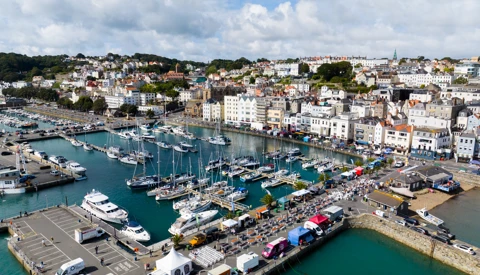First published in the Financial Times.
Humanitarian organisations are facing significant challenges due to the impact of climate change, conflict, and resulting migration. At the same time, they are seeing decreased donor funding creating a widening gap between their available resources and the demands for humanitarian assistance.
This gap has to be filled, humanitarian organisations are increasingly looking towards the private sector to support and to work alongside agencies to develop innovative financing solutions. The private sector long has a history of innovation driven from the pursuit of a competitive advantage, increased efficiencies and profits. The question is how to appropriately harness this for the humanitarian sector driven by doing good and maximising impact for the vulnerable.
Traditional humanitarian financing models are primarily based on donor funding with governments the biggest contributor via grants for specific programming or contributions to pooled funds, however this comes with limitations and challenges. It creates reliance on a few key governments. Changes in policy, as we are seeing today, can create instability and volatility in funding levels. It can also be inefficient and inflexible with donor constraints restricting the ability to adapt quickly to the evolving needs of the humanitarian organisations augmented by the effects of climate change.
The insurance industry has a long experience in creating innovative solutions to de-risk balance sheets and allow for leverage to do more with the funds available. It is successfully helping organisations tackle the increased volatility from climate change. This makes it well placed to support humanitarian organisations to bridge their own funding gaps.

Engagement between the insurance and humanitarian sectors has been evolving with key areas of successful collaboration including disaster risk financing, parametric insurance and microinsurance, underpinned by data sharing and analytics. This collaboration has led to several high-profile transactions with insurance being used as a tool for de-risking available funds, providing liquidity, leverage and improving resilience to humanitarian financing. In these instances, organisations have been able to unlock a multiple of donor funds via the private sector by committing funds to premium finance.
Humanitarian organisations are increasingly looking towards insurance as a catalyst for private sector investment. In recent years a number of notable transactions have happened through Guernsey, from the first humanitarian catastrophe bond in 2021, to more recent examples including the IFRC DREF Insurance, facilitated by Aon which paid out in 2024. At the time, Nena Stoiljkovic, the IFRC’s Under Secretary General for Global Relations and Humanitarian Diplomacy stated that “The triggering of the IFRC-DREF insurance policy is a significant moment. For the first time ever a single, worldwide, commercial indemnity insurance policy will pay the emergency humanitarian costs of disasters. The scale of the needs caused by 2024’s disasters is sobering. But the fact the insurance is helping with the burden is good news and proof that there are innovative finance solutions that we hope to grow in coming years.”
The use of insurance is improving the efficiency of capital and increasing the ecosystem of capital providers, through adopting private sector funding principles the use of risk management and data analytics is helping humanitarian organisations develop models for financial sustainability. This approach is moving what was a demand-based approach to financing to a risk-based approach in common with other parts of the private sector.

In March 2025, Tom Fletcher, the United Nations’ Under-Secretary-General for Humanitarian Affairs and Emergency Relief Coordinator, announced the need for “The Humanitarian Reset” to deal with the impacts of funding cuts and to ensure that lives can continue to be saved. Public and Private Sector partnerships and the building of financial sustainability through Innovative solutions including insurance can play an important role in helping to achieve the goal.
Offshore finance domiciles such as Guernsey are perfectly positioned to support, with innovative structures such as Aon’s White Rock Protected Cell facility connecting risk with capital and a regulatory regime that allows for speed of set-up and deployment of funds to where they are needed within days.
Within Aon’s 2024 Impact report, Aon President and CEO Greg Case stated that the use of “innovative insurance policies highlights the potential of our industry to do more to support humanitarian organisations and the vital work that they do to protect vulnerable populations.” It’s a clear message that there are solutions if humanitarian organisations are willing to embrace private sector financing principles and private sector capital can be brought in to support. Once again showing that with the right collaboration and innovative thinking, nothing is uninsurable.
By Mike Pickard, Director, Global ILS and Commercial Management – Aon Insurance Managers, and Emma Karhan, Head of Public Private Partnership – Aon UK







